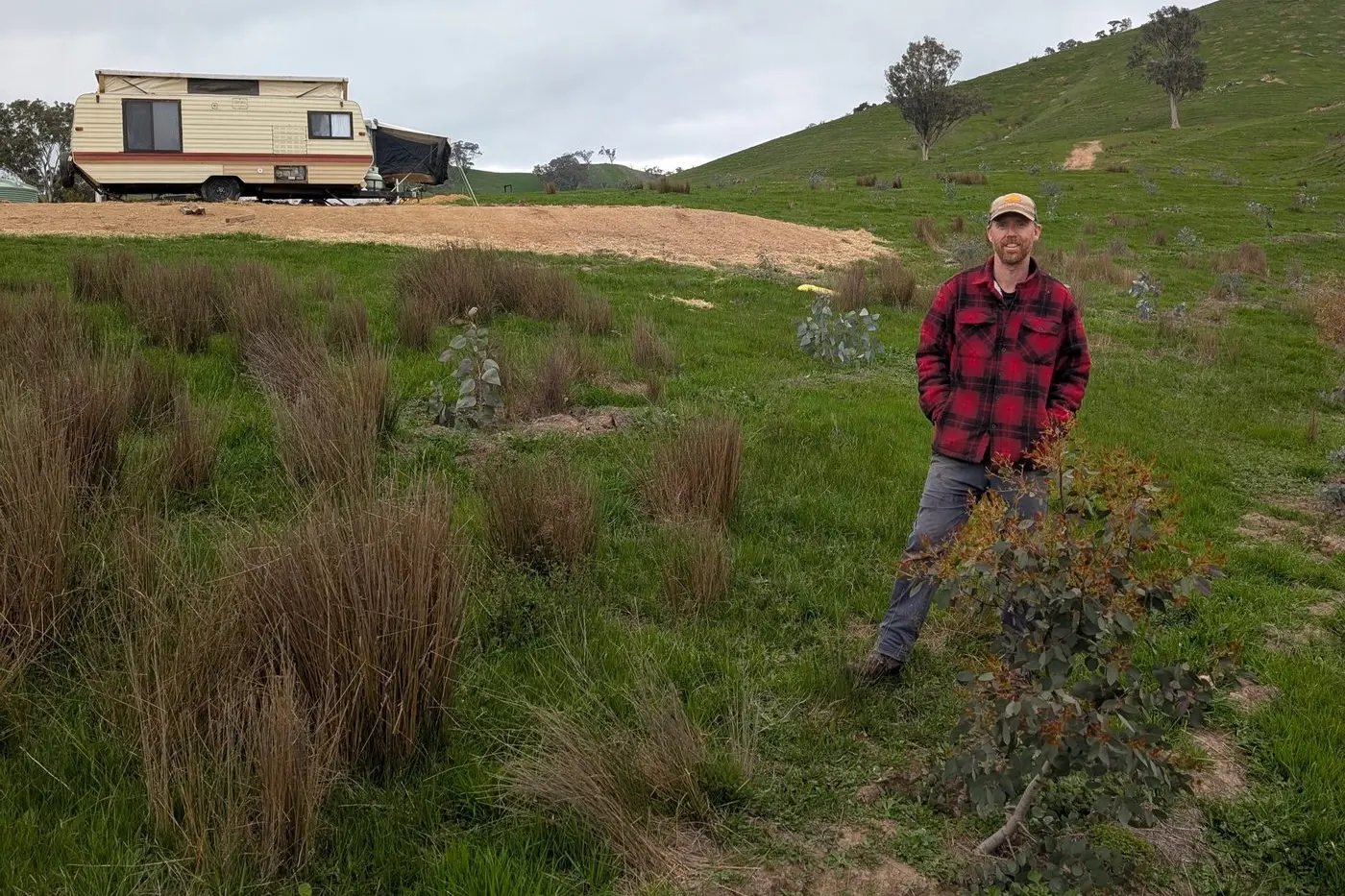PHOTO
It took a professional crew of seven just two and a half days to plant 15,000 native plants (trees, shrubs and grasses) at Lachlan Cook’s 100 acre property on Dry Creek Road, Bonnie Doon.
But Lachlan’s revegetation project took years to get to the point where the land was ready for planting.
And it will take decades to come to fruition.
The forest of seedlings that came up from Hamilton includes close to 30 varieties of native trees including eucalypts and acacias.
They were planted within dozens and dozens, if not hundreds of sprawling tynes furrowed upon the hillsides of a serene patch of rolling hills near the Tallangallook-Dry Creek Historic Area.
That was a year ago now.
In the 12 months that have passed since the mass planting was undertaken, his infant forest has survived an extended period of drought and regular visits from vegetation-consuming invasive pests such as rabbits and sambar deer.
But the trees have survived and indeed they are thriving.
Before long, the native wildlife in the area will flock to Lachlan’s property.
The yellow-tailed black cockatoos that fly over Dry Creek Road on languid wing beats and the brush-tailed phascogales living in tree hollows in the old remnant trees on Lachlan’s property will have a place where they too can thrive.
Along with so many other native species.
After all, nature is a big fan of the principle set out in the 1989 film, Field of Dreams.
‘If you build it, they will come.’
Lachlan is two years into a project that will see him build a 36 hectare bio-diverse habitat that is locked into permanence with a Trust for Nature Covenant that will see the habitat outlive the man whose hard work created it.
Asked what motivated him to undertake such a large and potentially lifelong task, Lachlan called it a lifestyle thing.
“Everyone is up in arms about the environment but how many people are actually doing anything about it?
“Bonnie Doon offered me proximity to Melbourne (where he spends his working weeks), relatively affordable purchase costs for land, and an attractive carbon yield.
“It’s also a beautiful part of the world and it makes for a great spot to escape into nature with friends and family.
“It will also make a very good spot to retire to if I can build a house here.
“I also think it will turn out to be a very good investment.”
As the trees grow, so too will the level of emissions they are able to absorb from the atmosphere, within them the emissions will be safely locked away as carbon.
It is this climate change mitigating action, that allows both Lachlan and the environment to reap rewards.
Australian landowners undertaking revegetation projects such as Lachlan’s can work with the Clean Energy Regulator to apply for Australian Carbon Credit Units.
Credits granted to the landowner can be held, sold, or even presold to generate an income from the revegetation project.
And with this in mind, Lachlan sees an opportunity to do right by the planet and hopefully earn himself enough money to build his family a farmhouse at his Dry Creek Road property
A spokesperson for the Department of Energy, Environment and Climate Action (DEECA) confirmed they were helping Lachlan revegetate his property.
“Our BushBank program is supporting the landowner to restore native habitat on their property near the Tallangallook-Dry Creek Historic Area, to help wildlife thrive and tackle climate change,” they said.
“Projects like this in the BushBank private land stream are helping to restore a total of at least 20,000 hectares of native habitat on private land across Victoria.
"The Government’s $77 million BushBank program is helping to restore our environments, creating more forests, grasslands and other native habitats for our native species to thrive across Victoria."
According to Cassinia Environmental, BushBank’s delivery partner, the BushBank program provides a unique opportunity for private landowners.
If selected to take part, private landowners will play a meaningful role in addressing climate change and supporting wildlife, leaving a legacy for generations to come, all the while receiving BushBank funding and guidance for their restoration project.
For more information: https://www.environment.vic.gov.au/bushbank

